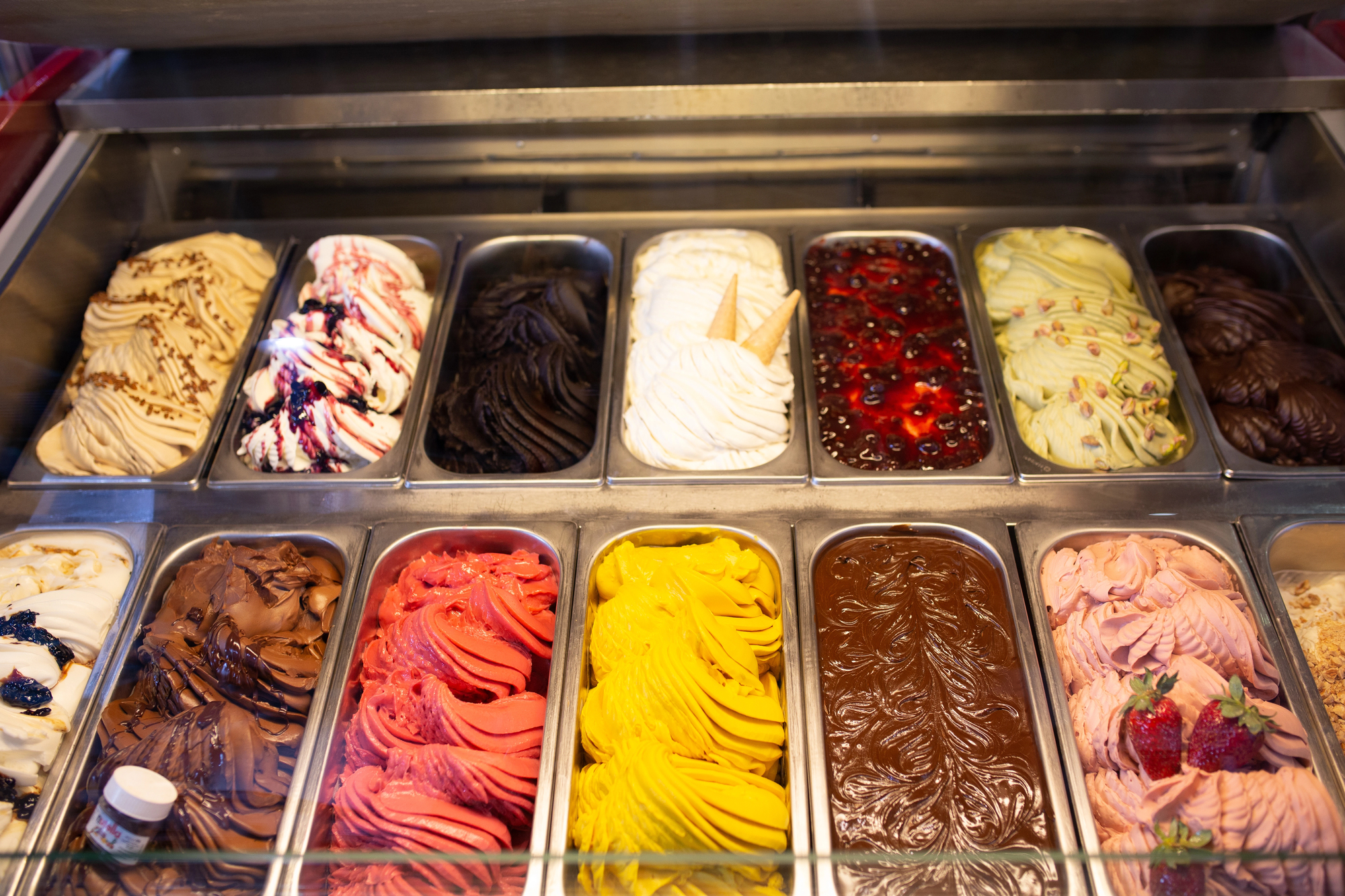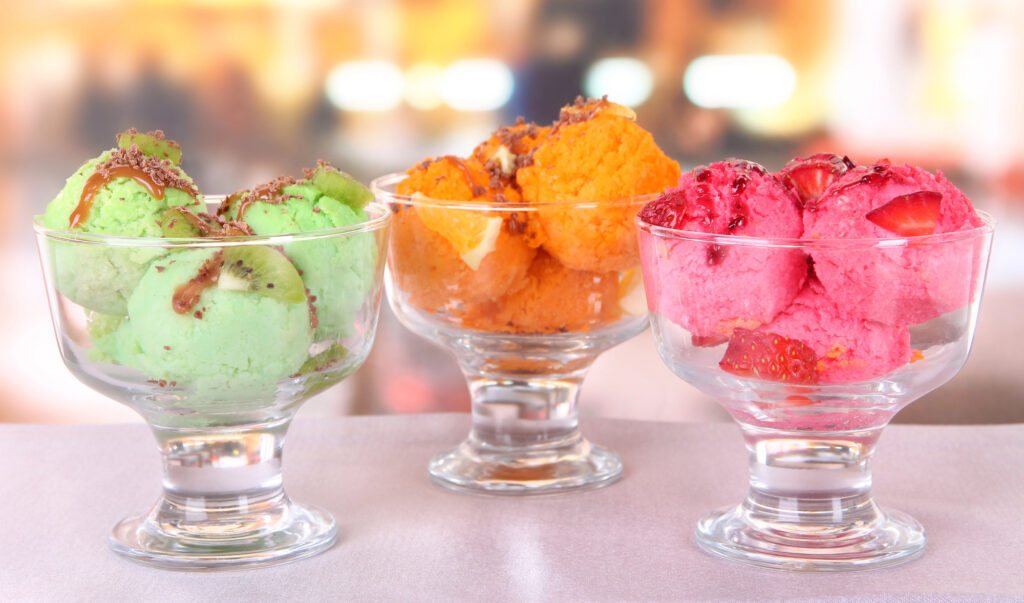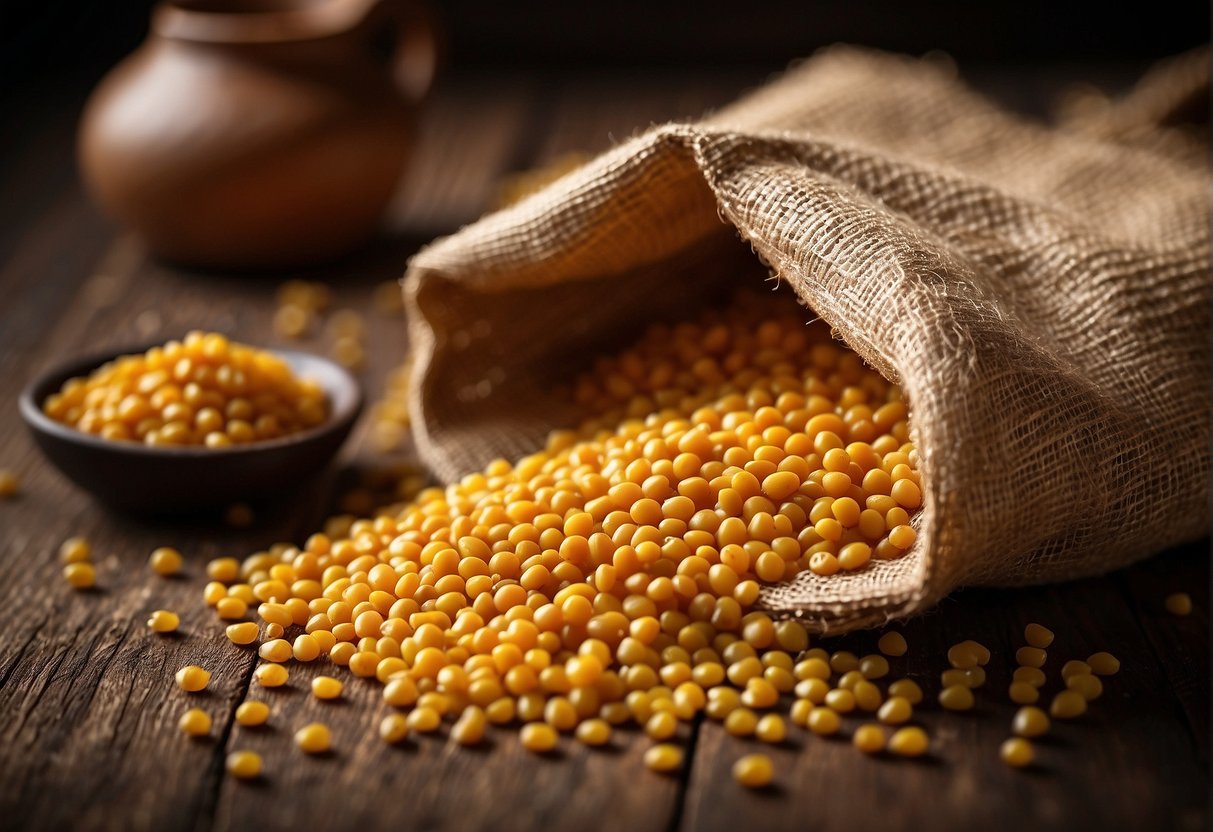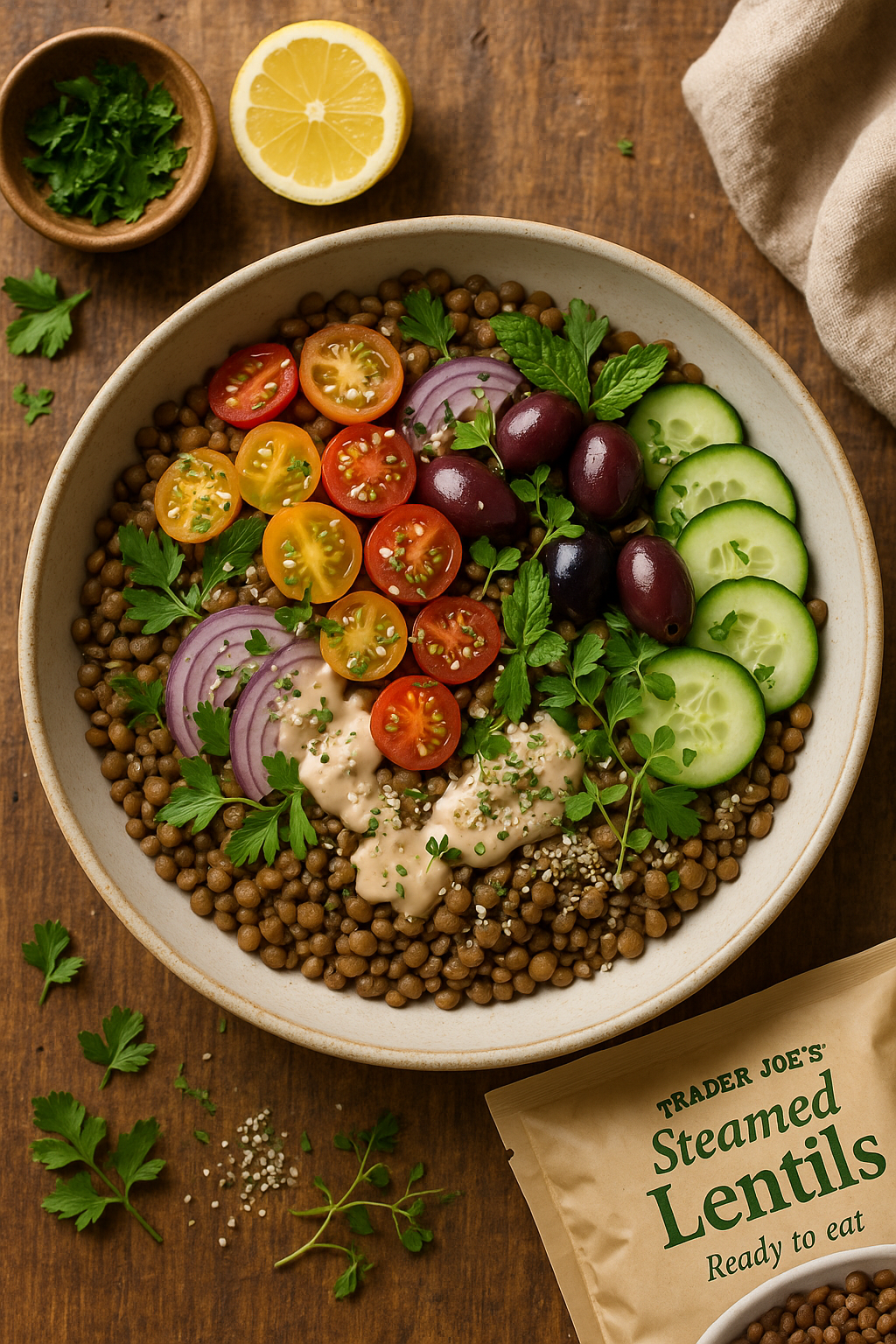Whenever I talk about gelato, it brings me back to my childhood days. It is one of my favorite desserts. I remember those warm summer afternoons in Italy, where my family and I would stroll through cobblestone streets, hunting for the perfect gelato shop. The anticipation of tasting those rich, creamy flavors would make my heart race with excitement. As I grew older, I began to appreciate the artistry behind this frozen delight – the meticulous preparation, the quality ingredients, and the passion of the artisans who created it.
Today, I still love gelato but I do not overindulge. And as dietary preferences evolve, a question I often hear is: is gelato dairy-free? This article aims to answer this question comprehensively while looking at various options for everyone’s dietary needs.

The Truth About Traditional Gelato
Gelato has earned its reputation as a beloved frozen treat thanks to its smooth texture and intense flavors. Traditional Italian gelato is made with milk, cream, and sometimes egg yolks, which means it does contain dairy and is not suitable for those following a dairy-free diet.
Compared to ice cream, gelato typically has less fat because it’s made with more milk than cream. It’s also churned more slowly, which introduces less air into the mixture. This creates a denser consistency and a more concentrated flavor, allowing ingredients like chocolate, nuts, or fruit to stand out more clearly.
In recent years, however, the gelato landscape has expanded to include dairy-free options, making it more accessible to people who are lactose intolerant, vegan, or choosing to limit dairy for health or environmental reasons. Some gelaterias also offer lactose-free versions of traditional gelato. These are still made with dairy but include the enzyme lactase, which helps break down lactose and can make the gelato easier to digest for those with lactose sensitivity.
The Rise of Dairy-Free Gelato Alternatives
As consumer dietary preferences have evolved, so has the gelato industry. More people are asking “is gelato dairy-free?” which has led to notable developments in non-dairy frozen dessert options. The market now offers dairy-free gelato alternatives that provide similar experiences to traditional gelato, with manufacturers focusing on achieving comparable texture and flavor profiles using plant-based ingredients.
Plant-Based Milk Alternatives
Modern dairy-free gelato typically uses a variety of plant-based milk alternatives. Coconut milk provides a naturally creamy base and subtle tropical flavor, while almond milk offers a lighter texture with nutty undertones. Oat milk creates a neutral, creamy base that carries flavors well, and cashew milk produces an exceptionally smooth texture. Other options include rice milk, which gives a delicate sweetness and light consistency, and soy milk, which delivers protein and a neutral flavor profile.
In my experience, coconut and cashew bases tend to produce the creamiest dairy-free gelatos, while almond and oat versions offer more distinct flavor profiles that pair beautifully with certain ingredients.
Exploring the Rainbow of Gelato Flavors
One of the joys of gelato – both traditional and dairy-free – is the vast array of flavors available. The depth of taste found in both classic and contemporary gelato varieties comes from their meticulous preparation, often involving high-quality ingredients like fresh fruits, nuts, and premium chocolate.
Timeless Classics Reimagined
Traditional gelato flavors have been reinvented in dairy-free versions. I’m happy to report that virtually every beloved flavor now has dairy-free counterparts.
Vanilla, often considered the benchmark for gelato quality, achieves its subtle yet profound profile through real vanilla pods in both dairy and non-dairy versions. In dairy-free varieties, the vanilla often pairs beautifully with coconut or cashew bases.
Chocolate gelato, another favorite, features an intense and luxurious taste in both traditional and dairy-free forms. I’ve found that oat milk and cashew milk chocolate gelatos can be just as decadent as their dairy counterparts when made with high-quality cocoa.
Pistachio, traditionally made with milk and ground pistachios, now appears in stunning dairy-free versions that let the nutty flavors take center stage, often using almond milk as a complementary base.
Fruit-Forward Varieties
Fruit gelatos are where dairy-free options truly shine. In fact, many classic fruit gelatos are naturally dairy-free, falling into the category of “sorbetto” (sorbet). Berry varieties like strawberry, raspberry, and blackberry offer rich, vibrant flavors. Citrus options including lemon, orange, and grapefruit provide refreshing tanginess. Tropical fruits such as mango, passion fruit, and pineapple bring exotic sweetness to the frozen treat world.
These refreshing options capture the essence of fresh produce with vibrant colors and natural sweetness. The absence of dairy often allows the true fruit flavors to come through more vividly.
Innovative Combinations
Modern gelaterias are constantly pushing boundaries with creative flavor combinations in both dairy and dairy-free options. Dark chocolate with sea salt and olive oil (often made with oat milk in dairy-free versions), roasted banana with cinnamon (wonderful with coconut milk base), and lavender honey (delicate and aromatic with almond milk) exemplify how innovative artisans are reimagining frozen desserts.
These innovative flavors demonstrate that choosing dairy-free options doesn’t mean limiting your flavor options – in fact, it might expand them.
The Art of Making Gelato at Home

As my passion for gelato grew, I began experimenting with making it at home. Creating dairy-free versions presented both challenges and opportunities for creativity.
If you’re serious about making your own creamy, dairy-free gelato at home, the Cuisinart ICE-100 Compressor Ice Cream and Gelato Maker is a must-have! This top-of-the-line machine ensures perfect texture every time with its built-in compressor, meaning you don’t need to pre-freeze the bowl. With its sleek design and user-friendly controls, you’ll be churning out batches of your favorite flavors, from creamy coconut milk gelato to rich chocolate cashew gelato, in no time.

Cuisinart ICE-100 1.5-Quart Ice Cream and Gelato Maker, Fully Automatic with a Commercial Quality Compressor and 2-Paddles
- SUPERIOR FUNCTION: The Cuisinart fully automatic ice cream maker with commercial compressor makes lusciously rich gelato and ice cream-batch after batch- the commeCONTROL: 60-minute countdown timer with touchpad controls and blue LCD readout for accuracyrcial quality compressor-freezer means it’s always ready to go
- CAPACITY: Makes 1.5-quarts of your favorite ice cream, frozen yogurt, gelato or sorbet
- CONTROL: 60-minute countdown timer with touchpad controls and blue LCD readout for accuracy
- SPECIAL FEATURES: 2 paddles, 1 for gelato and 1 for creamy ice cream with a 10-minute Keep Cool feature that keeps your ice cream or gelato cool after the timer has gone off
Essential Equipment and Ingredients
Making this dessert at home requires an ice-cream maker (ideally one that can churn slowly), a reliable thermometer, quality ingredients, and patience and attention to detail.
For dairy-free gelato, selecting the right plant milk is essential. I recommend full-fat coconut milk for the creamiest results, homemade cashew cream for exceptional smoothness, or commercial barista versions of plant milks, which typically have stabilizers that help with texture.
Basic Dairy-Free Gelato Base Recipe
Here’s a simple dairy-free gelato base I’ve perfected over time:
Ingredients:
- 2 cups plant milk of choice (coconut, cashew, or oat work best)
- 1/2 cup sugar (adjust based on desired sweetness and added flavors)
- 2 tablespoons corn starch (helps create creaminess without eggs)
- 1/4 teaspoon xanthan gum (optional, improves texture)
- Pinch of salt
- Flavoring of choice
Process:
- Whisk together sugar, corn starch, xanthan gum, and salt in a saucepan.
- Gradually whisk in plant milk to avoid lumps.
- Heat mixture over medium heat, stirring constantly until it thickens slightly (should coat the back of a spoon).
- Remove from heat and add flavoring ingredients.
- Cool completely, then refrigerate for at least 4 hours or overnight.
- Churn according to your ice cream maker’s instructions, but aim for a slower churn if possible.
- Serve immediately for soft-serve consistency or freeze for 2-3 hours for a firmer texture.
This versatile base can be adapted for countless flavor variations, from vanilla bean to chocolate to fruit-infused options.
For anyone looking to take their dairy-free gelato-making to the next level, the Vitamix 5200 Blender is the ultimate tool for creating smooth, creamy bases. Whether you’re blending cashews for a creamy gelato base or creating vibrant fruit flavors, this high-performance blender handles it all with ease. Its powerful motor and precision blades will help you achieve the perfect consistency every time, ensuring your homemade gelato rivals the best gelaterias!

Vitamix 5200 Blender, Professional-Grade, 64 oz Container, Self-Cleaning, Black
- Variable Speed Control: Easily adjust speed to achieve a variety of textures. The dial can be rotated at any point during the blend, so you’re in complete control
- Large Batches: The size and shape of the self-cleaning 64-ounce container is ideal for blending medium to large batches. Design Feature : Radial cooling fan and thermal protection system
- Hot Soup: The blades in the Vitamix container reach speeds fast enough to create friction heat, bringing cold ingredients to steaming hot in about six minutes
- Hardened Stainless-Steel Blades: Our aircraft-grade stainless steel blades are designed to handle the toughest ingredients, so from the first blend to the last, you get the same quality results
Tips for Better Texture
Several techniques can significantly improve homemade dairy-free gelato texture. Adding a small amount of neutral oil (like refined coconut oil) helps mimic the fat content in dairy gelato, creating a smoother mouthfeel. Using a combination of sweeteners, such as sugar with invert sugar or corn syrup, improves consistency and prevents crystallization during freezing.
Blending in a small amount of soaked cashews adds remarkable creaminess to any plant-milk base, even those that might otherwise be too thin. For a professional touch, adding a splash of alcohol (like vodka) lowers the freezing point, resulting in a softer scoop straight from the freezer.
Finding the Best Dairy-Free Gelato
For those times when making gelato at home isn’t practical, it’s worth exploring commercial options.
My favorite flavor is strawberry. My go-to would be the Talenti Dairy-Free Sorbetto in Summer Strawberry flavor. This vegan-friendly and lactose-free frozen dessert is made with high-quality, natural ingredients like sweet, ripe strawberries, water, and sugar. Smooth, refreshing, and bursting with the authentic flavor of sun-kissed strawberries, this sorbetto is a perfect dairy-free indulgence.
- Sprinkle sweetness into your day with Talenti Summer Strawberry Sorbetto, made with real strawberries in every jar. Take a bite of summer with this delightful non-dairy frozen dessert.
- This frozen dessert is made with only the highest quality ingredients and juiciest hand harvested strawberries from Zamora, Mexico, blended with a dash of lemon to create a unique Talenti twist.
- Grab a pint of our Summer Strawberry flavor with real strawberries in each spoonful! Italian inspired, this sorbet makes a smooth and refreshing frozen dessert any time of year.
- Talenti Sorbetto is the perfect non-dairy treat when you’re craving something light and refreshing like sherbert or a popsicle, but nothing as creamy or indulgent as ice cream or gelato.
- This jar of Summer Strawberry sorbetto is certified Kosher and made with non-GMO ingredients, blended with real strawberries for an explosion of ruby red sweetness.
Reading Labels and Avoiding Hidden Dairy
When shopping for dairy-free gelato, I’ve learned to carefully read labels. There are several common dairy ingredients to avoid: milk (including skim, low-fat, etc.), cream, milk solids or milk powder, whey, casein or caseinates, lactose, and butter or butter fat. Any of these ingredients means the product is not truly dairy-free.
It’s also worth checking the allergen information on packaging. Many manufacturers now clearly label their products with “dairy-free” or “vegan” certifications, making it easier to identify suitable options. Some products may use alternative sweeteners or additional stabilizers to achieve the right texture, so if you have other dietary preferences or restrictions, a quick scan of the ingredient list will help you find your perfect match.
Gelato Shop Strategies
When visiting gelaterias, I’ve developed strategies for finding dairy-free options. Call ahead or check websites to confirm dairy-free availability. Ask specifically about cross-contamination if you have allergies. Look for fruit sorbettos, which are naturally dairy-free. Request to see ingredient lists rather than relying solely on staff knowledge. Build relationships with local gelato shops that accommodate dietary restrictions.
Many artisanal gelaterias now take pride in offering dairy-free options that maintain the quality and craftsmanship of their traditional selections.
Nutritional Considerations of Dairy vs. Non-Dairy Gelato
As someone who enjoys gelato but also values nutrition, I’ve researched how traditional and dairy-free options compare nutritionally.
Comparing Calories and Fat Content
Traditional gelato typically contains:
- Fewer calories than premium ice cream (due to less fat and less air)
- About 4-9% milk fat (compared to 14-25% in premium ice cream)
- Protein from milk
- Calcium and other nutrients found in dairy
Dairy-free gelato nutritional profiles vary widely based on the base ingredient:
- Coconut milk versions often have similar fat content to dairy gelato but with different types of fats (medium-chain triglycerides)
- Nut milk versions (almond, cashew) typically have moderate fat content with heart-healthy unsaturated fats
- Rice and oat milk versions generally have lower fat content but may have higher carbohydrate content
Neither option is inherently “healthier” – the nutritional value depends on the specific ingredients and preparation methods.
Sugar Content and Alternatives
Both dairy and dairy-free gelato typically contain significant amounts of sugar. However, many modern producers offer options with:
- Reduced sugar content
- Alternative sweeteners (agave, maple syrup, monk fruit)
- No added sugars (relying on fruit for sweetness)
When selecting gelato, I look for options with moderate sugar content and minimal artificial ingredients. For individuals with allergies or strict dietary restrictions, checking for a gluten-free label alongside the dairy-free confirmation is vital.
The Future of Dairy-Free Gelato

The innovation in dairy-free gelato continues at a rapid pace, with exciting developments emerging constantly.
Emerging Ingredients and Techniques
Food scientists and artisanal producers are exploring:
- Precision fermentation to create dairy-identical proteins without animals
- Novel plant ingredients like tiger nuts and barley milk
- Advanced stabilization techniques that improve texture without additives
- Cultured plant milks that develop complex flavor profiles similar to dairy
These innovations continue to narrow the gap between traditional and dairy-free gelato, making the question “is gelato dairy-free?” increasingly less about compromise and more about preference.
Sustainability Considerations
As environmental awareness grows, many gelato producers are highlighting the sustainability benefits of dairy-free options:
- Lower carbon footprint (plant milks generally require fewer resources than dairy)
- Reduced water usage
- Less land required for production
- Fewer ethical concerns related to animal welfare
These factors are becoming increasingly important to consumers who choose dairy-free gelato not just for health or taste preferences but also for environmental impact.
Answering Common Questions About Dairy-Free Gelato
I’ve come across many common questions about dairy-free gelato. Here are some of the key ones:
Is sorbet the same as dairy-free gelato?
No, though both can be dairy-free. Sorbet (or sorbetto in Italian) contains no dairy or eggs and is made primarily from fruit, sugar, and water. It has a different texture than gelato – icier and less creamy. Dairy-free gelato attempts to replicate the creamy texture of traditional gelato using plant-based alternatives to milk.
Does dairy-free gelato taste as good as traditional gelato?
This is subjective, but high-quality dairy-free gelato can be exceptional. The best versions don’t try to exactly mimic dairy gelato but instead create something equally delicious with its own character. Some flavors, particularly those that naturally complement plant bases (like chocolate with coconut milk), can rival or exceed their dairy counterparts.
Is dairy-free gelato suitable for all dietary restrictions?
Not automatically. While dairy-free gelato works for lactose intolerance and dairy allergies, those with other allergies (nuts, soy) need to check ingredients carefully. Additionally, some dairy-free gelatos contain eggs, so they wouldn’t be suitable for vegans. Always read labels or ask producers about specific ingredients.

Final Thoughts
Throughout this article, we’ve journeyed together through the world of gelato, addressing the question “is gelato dairy-free?” while examining the rich traditions of classic gelato and the exciting innovations in dairy-free alternatives. We’ve looked at the science behind gelato’s unique texture, explored diverse plant-based options, discovered how to make our own at home, identified top brands to try, and considered nutritional aspects of both traditional and dairy-free varieties.
The evolution of gelato represents something bigger than just frozen desserts – it symbolizes how food traditions can honor their heritage while adapting to new needs and values. Every time we choose between traditional or dairy-free gelato, we’re participating in a food culture that increasingly values both tradition and inclusion. What matters most is the quality and care that goes into its creation. The best producers, regardless of their ingredients, share a passion for creating moments of pure pleasure through frozen culinary artistry.
I believe the best gelato experiences come not just from the quality of ingredients, but from the joy of sharing these frozen delights with others, regardless of dietary restrictions. Next time you’re craving a frozen treat, I encourage you to step outside your comfort zone – try that innovative dairy-free flavor, support a local artisan gelato maker, or even attempt creating your own signature gelato at home. Your perfect scoop awaits!

*We may earn a commission for purchases made using our links. Please see our disclosure to learn more.




